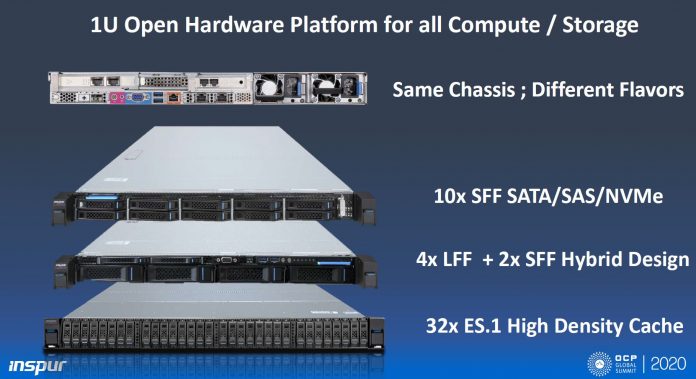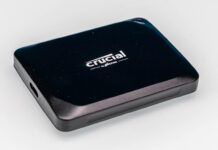For the OCP Summit 2020, I had the opportunity to talk with Alan Chang, Deputy GM and Senior Director of Server at Inspur about a number of topics. One I specifically wanted to highlight and that is the company’s collaboration with Samsung on a new open comptue and storage solution for next-generation PCIe Gen4 E1.S storage. We covered part of the Samsung angle in our Samsung PM9A3 PCIe Gen4 NVMe Data Center SSDs piece. Now we can focus on the platform those SSDs are designed to run in.
Inspur 1U Open Hardware Platform for Compute and Storage
During our discussion, we focused a lot on the new Inspur 1U open hardware platform for compute and storage. This system is designed to provide multiple storage options supporting NVMeoF. Not only can this server utilize x86 compute to manage the storage, but it can also use non-x86 accelerators.
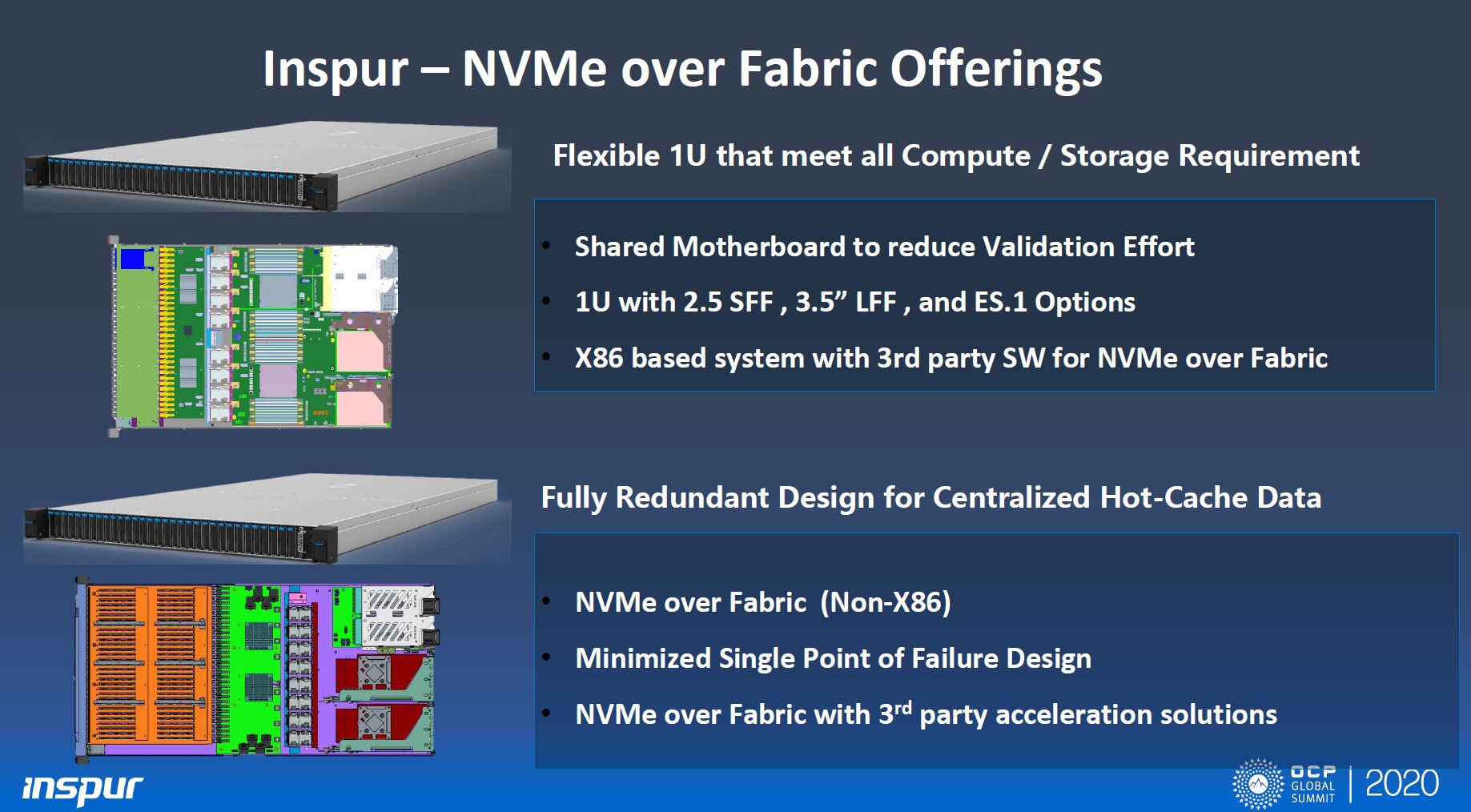
Currently dubbed the Inspur NF5180M6, it is a successor to the Inspur NF5180M5 we reviewed with several new features. While many think of OCP servers as being 21″ designs for Facebook or Microsoft, Inspur is pushing the idea than an OCP server can be a 19″ server that is more easily consumable by traditional enterprises that want some of the benefits of OCP without having to swap racks.
The server itself is noteworthy in that it has 10x 2.5″, 4x 3.5″ + 2x 2.5″, and even 32x E1.S options in the same server chassis. One of Alan’s key points is that allowing different storage options in the same chassis allows customers to buy different versions of a test system to do direct comparisons between, for example, 2.5″ storage and E1.S storage while keeping the rest of the system constant.
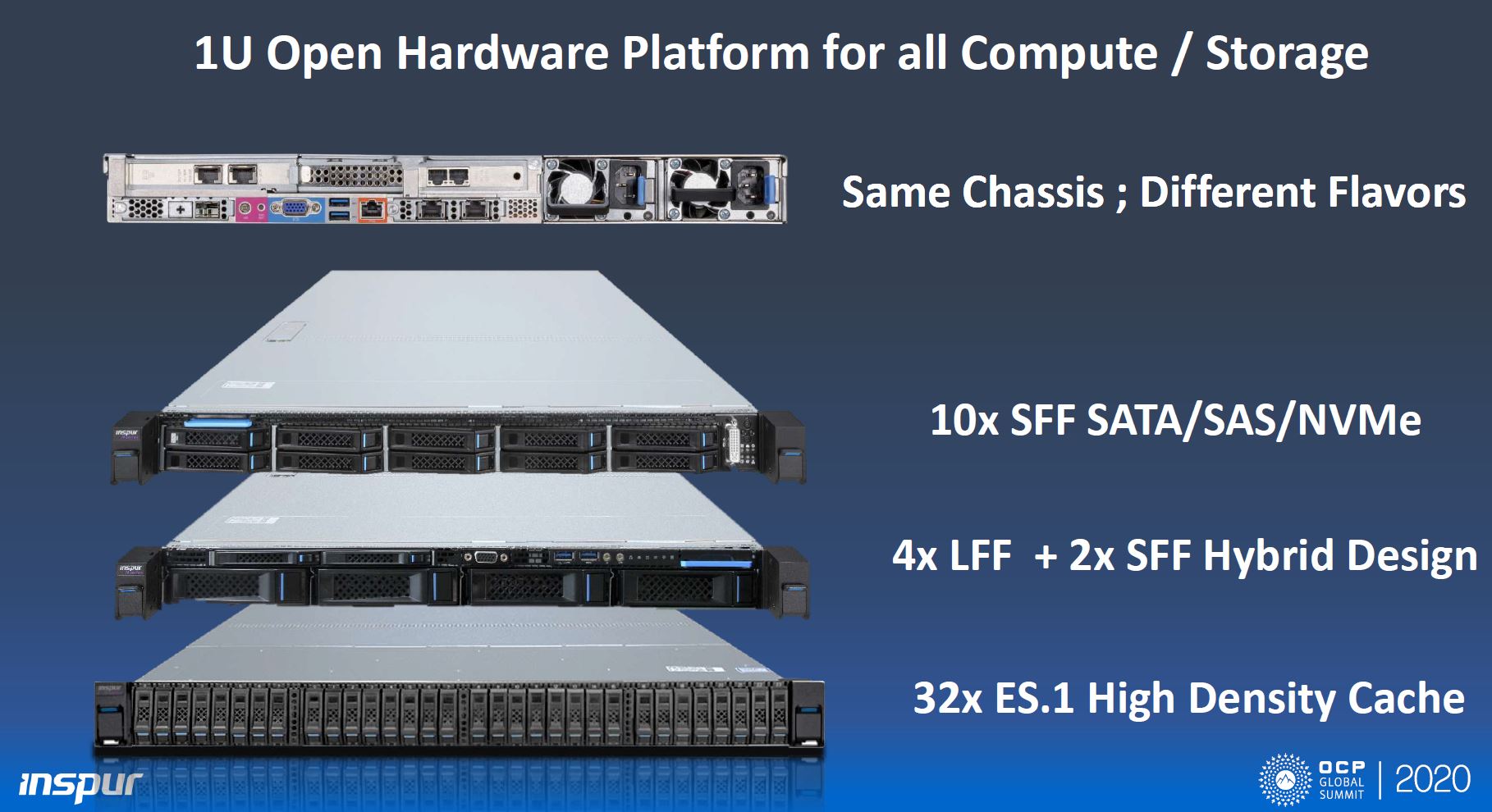
Another key factor is that the system is designed, in many ways, with a similar aim as the Inspur Systems NF8260M5 4P Intel Xeon OCP Server we reviewed. The design is being contributed to the OCP project (once Whitley formally launches with Ice Lake Xeons.) With the Inspur 4P platform, a major hyper-scale client started utilizing the design. As a result, both volumes and quality go up. As volumes increase, costs decrease which makes sense. Also, as volumes increase more corner cases are tested and quality increased. Inspur’s goal is for the NF5180M6 to similarly see adoption by the OCP community even as a standard 19″ rack design.
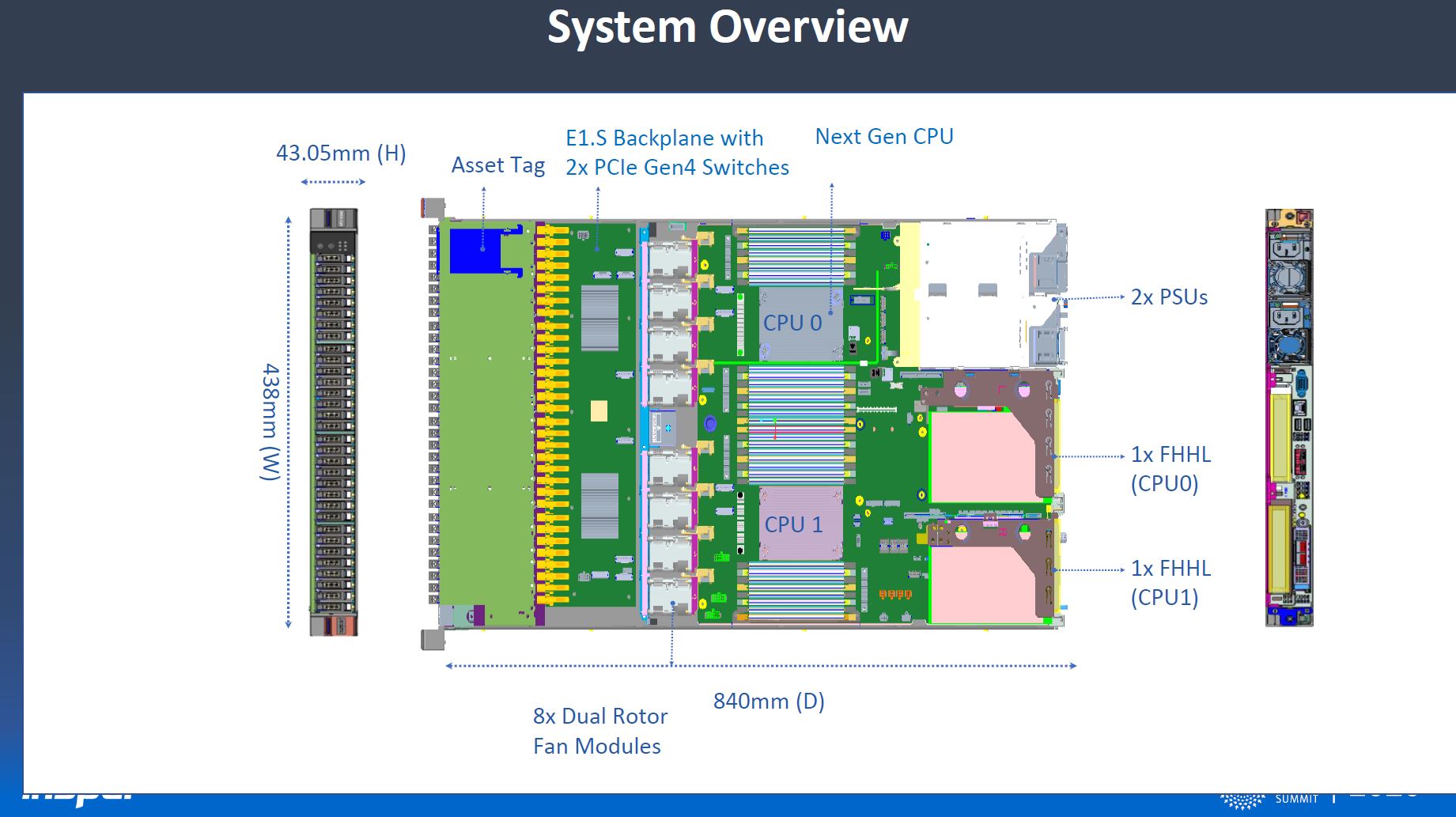
The platform itself is a next-gen Whitley platform for Ice Lake Xeons. That means the platform is designed for the Xeon generation that will arrive later in 2020. With the new Xeons we expect to get 8-channel memory support, Barlow Pass (next-gen DCPMM), and PCIe Gen4 support with up to 64x lanes per socket. Even with additional PCIe Gen4 per socket, that is not enough to service 32x PCIe x4 E1.S devices plus a 100GbE NIC so the design requires PCIe Gen4 switches. Inspur did not disclose future platform details, but it seems as though they are accomplishing this via a switched backplane. That switched backplane could work with an AMD EPYC 7002/ 7003 solution as well, however, Inspur does not have an AMD EPYC platform at the time of this writing.
Another key component is the Inspur E1.S backplane design. E1.S is still a relatively new form factor. As a result, even before the Whitley platform becomes available, something such as this backplane design allows it to be adopted early in the process by being part of an OCP contribution. There are many that think E1.S will gain massive market share in the PCIe Gen4 generation. Alan’s view is that the more adoption of the E1.S backplane design with its two PCIe Gen4 switches will mean lower costs and higher quality.
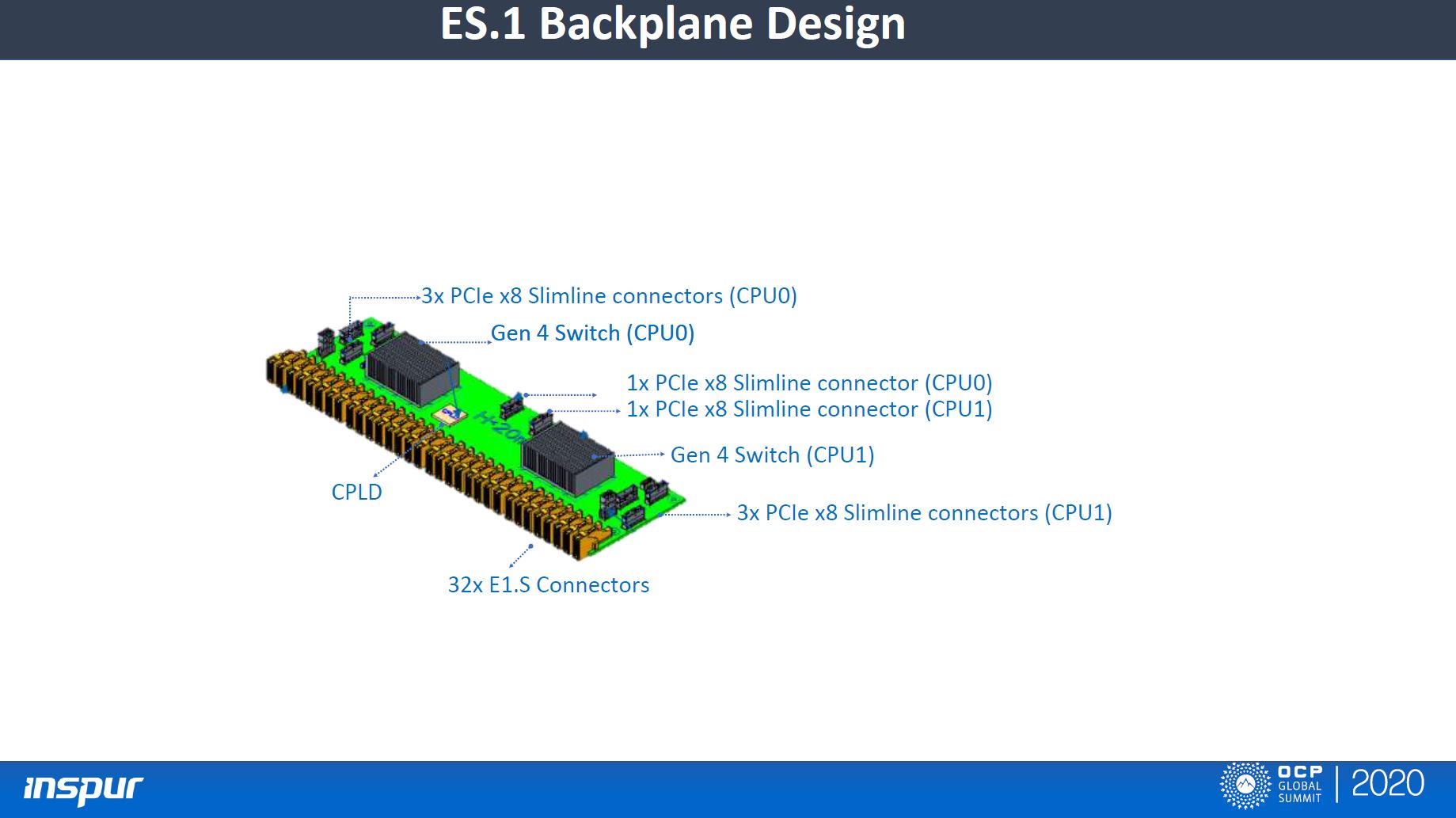
When installed into a server, the solution will present the PCIe Gen4 SSDs over 100Gbps fabric. Different NVMeoF software and even accelerator technologies can be utilized. For many applications, E1.S will be the highest-performing option. For some, they will not see the benefit of the higher-density storage so the next-gen platform gives an opportunity to test different SSD configurations alongside NVMeoF software and application use cases.
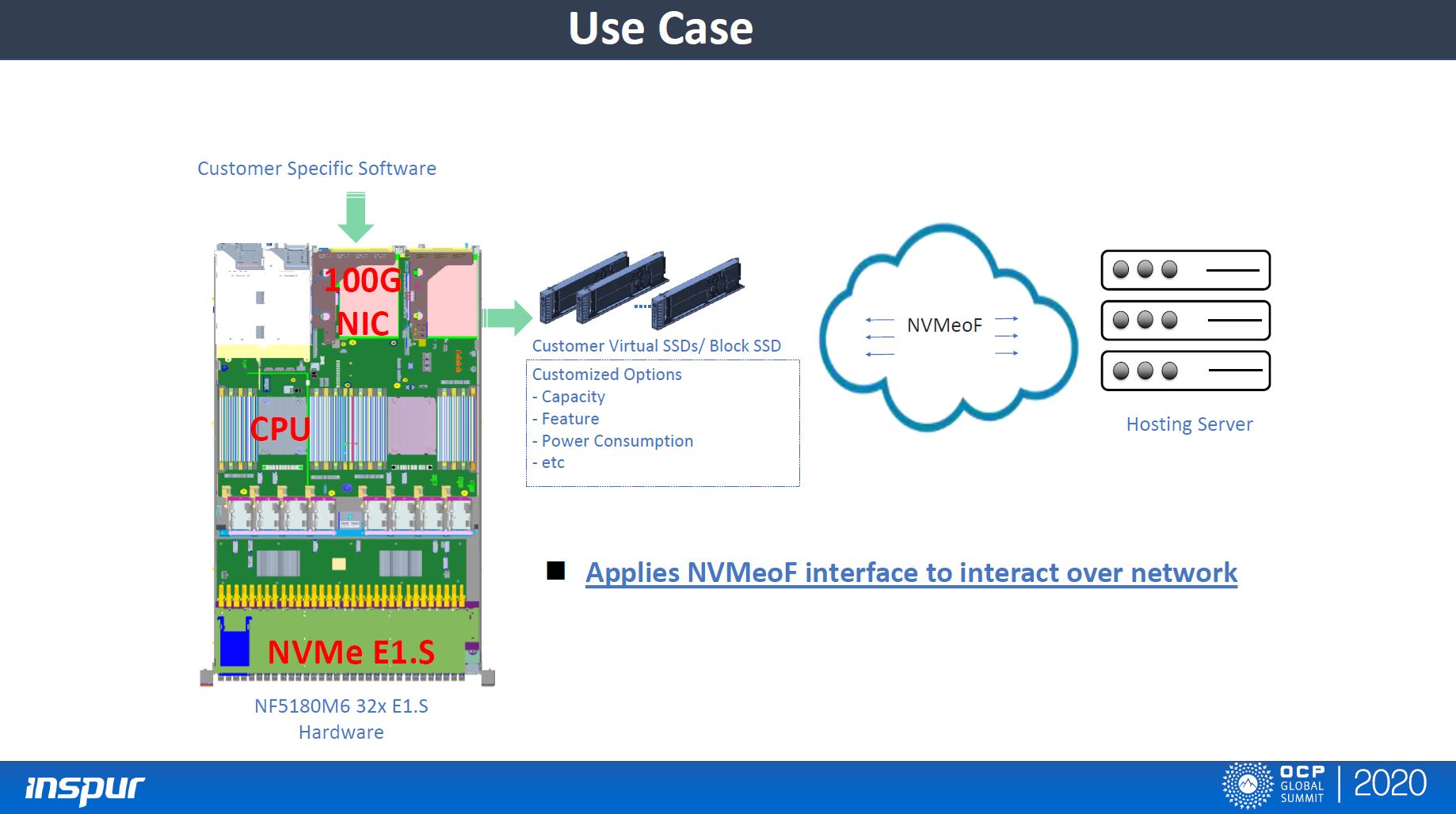
While we focused our discussion on the NVMeoF use case, that is not the only capability of the server. As we discussed, this is a next-gen 1U dual-socket mainstream server from Inspur that will see contributions to the OCP community. As a result, it can be used as a general-purpose compute platform as well.
Final Words
Alan is a big believer in the benefits of OCP extending well beyond entire servers. As an example, the OCP NIC 3.0 that is utilized on the Inspur NF5180M6 is also being adopted by almost every other vendor in the industry. That makes the OCP NIC 3.0 perhaps the most impactful OCP hardware project to date. With the industry standardizing on the new form factor and traditional proprietary NICs from vendors such as Dell, HPE, and others being abandoned for the new industry standard, volumes go up, quality goes up, and costs go down.
Inspur’s goal with the next-gen 1U E1.S project is that the system can be adopted by traditional customers with 19″ racks. For customers who are evaluating NVMeoF with different solutions, this provides a common hardware platform to test E1.S and 2.5″ storage to see what is best for a given application.
Expect to see systems like this shipping in late 2020 and early 2021.

